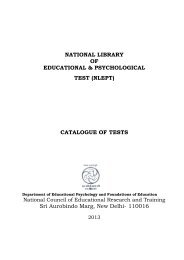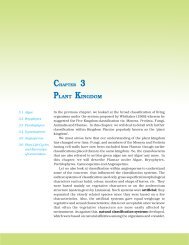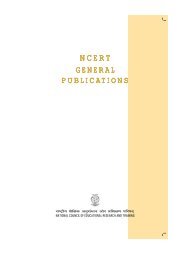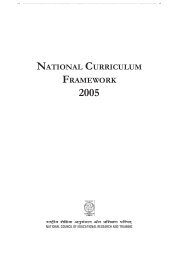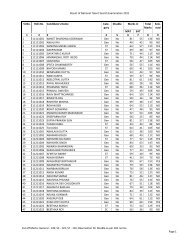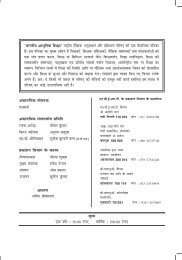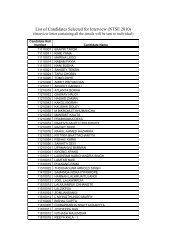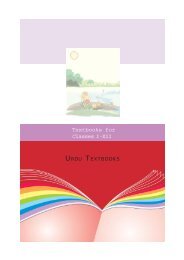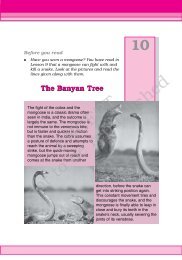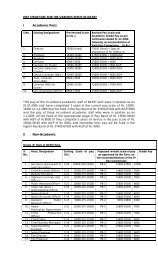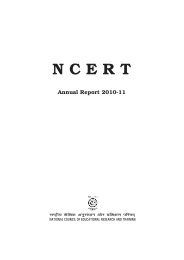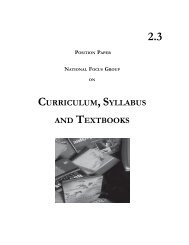Chap-03 discovering tut - National Council Of Educational Research ...
Chap-03 discovering tut - National Council Of Educational Research ...
Chap-03 discovering tut - National Council Of Educational Research ...
You also want an ePaper? Increase the reach of your titles
YUMPU automatically turns print PDFs into web optimized ePapers that Google loves.
DISCOVERING TUT: THE SAGA CONTINUES 23<br />
AN angry wind stirred up ghostly dust devils as King Tut was taken<br />
from his resting place in the ancient Egyptian cemetery known as<br />
the Valley of the Kings*. Dark-bellied clouds had scudded across<br />
the desert sky all day and now were veiling the stars in casket<br />
grey. It was 6 p.m. on 5 January 2005. The world’s most famous<br />
mummy glided head first into a CT scanner brought here to probe<br />
the lingering medical mysteries of this little understood young ruler<br />
who died more than 3,300 years ago.<br />
All afternoon the usual line of tourists from around the world<br />
had descended into the cramped, rock-cut tomb some 26 feet<br />
underground to pay their respects. They gazed at the murals on the<br />
walls of the burial chamber and peered at Tut’s gilded face, the most<br />
striking feature of his mummy-shaped outer coffin lid. Some visitors<br />
read from guidebooks in a whisper. Others stood silently, perhaps<br />
pondering Tut’s untimely death in his late teens, or wondering with<br />
a shiver if the pharaoh’s curse — death or misfortune falling upon<br />
those who disturbed him — was really true.<br />
“The mummy is in very bad condition because of what Carter<br />
did in the 1920s,” said Zahi Hawass, Secretary General of Egypt’s<br />
Supreme <strong>Council</strong> of Antiquities, as he leaned over the body for a<br />
long first look. Carter—Howard Carter, that is — was the British<br />
archaeologist who in 1922 discovered Tut’s tomb after years of<br />
futile searching. Its contents, though hastily ransacked in antiquity,<br />
were surprisingly complete. They remain the richest royal collection<br />
ever found and have become part of the pharaoh’s legend. Stunning<br />
artefacts in gold, their eternal brilliance meant to guarantee<br />
resurrection, caused a sensation at the time of the discovery —<br />
and still get the most attention. But Tut was also buried with<br />
everyday things he’d want in the afterlife: board games, a bronze<br />
razor, linen undergarments, cases of food and wine.<br />
After months of carefully recording the pharaoh’s funerary<br />
treasures, Carter began investigating his three nested coffins.<br />
Opening the first, he found a shroud adorned with garlands of<br />
willow and olive leaves, wild celery, lotus petals, and cornflowers,<br />
the faded evidence of a burial in March or April. When he finally<br />
reached the mummy, though, he ran into trouble. The ritual resins<br />
had hardened, cementing Tut to the bottom of his solid gold coffin.<br />
“No amount of legitimate force could move them,” Carter wrote<br />
later. “What was to be done?”<br />
The sun can beat down like a hammer this far south in Egypt,<br />
and Carter tried to use it to loosen the resins. For several hours<br />
* See map on next page



